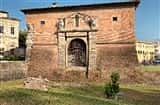Stay
Visit a locality browsing the menu on the left. In each Italy area you can then choose the best touristical structures we are proposing.
More About
Here you can find info and tips about the area you are visiting.
Most viewed in
Italy
-
Romantic Boat wants to ensure you an unforgettable vacation, enjoying the crystal clear sea of the Amalfi coast, Positano and Capri, on board of our beautiful and comfortable boats. The boats are rented with their skipper and also with cruise accessories...
-
Thanks to their thirty years experience and innate passion for the sea, the Coppola brothers manage the Pontile Coppola (Coppola Wharf) with professionalism, offering high quality services to all boaters who come every year to Amalfi, to admire the pearl...
-
Close your eyes and imagine an unusual vacation: direct contact with the sea without renouncing to all modern comforts, the pleasant warmth of the sun, the smell of salt air mixed with the typical essences of the Mediterranean vegetation, foamy waves...
-
"Elite" is a full-featured version yacht, produced by the Cranchi Italian shipyard: it is a modern vessels with a unique style and an unmistakable line. Cranchi is a famous Italian company with over a century of history. It has written one of the most...
Print this page
Send to a friend by e-mail
The furnace of Porta San Donato
-

The structure of the furnace of Porta San Donato was, in the local area, an unique example in its genre. Characterized by a rather particular conformation, linked to a production of "fine ceramics" , although it has also been used for the production of common ceramics frequently used in the preparation of Lucca dining tables. Why was used a furnace with this conformation for the production of precious artefacts with so little demand at local level? The answer to this question is in the historical documents about the furnace and its use.
We learn from these documents that in 1643, after the creation of a new entrance to the city, the huge spaces of the old gate of San Donato, were assigned to the Genoese craftsman Giovanni Antonio Salomoni, for the creation of a pottery factory. The furnace "indirect cooking" was necessary in the production of high-level majolica. Unfortunately we do not have findings of this production. Instead we have a large amount of artefacts related to the production of the so-called «graphite» ceramic, a much more common type.
It is natural to think that the Genoese craftsman Salomoni had come to Lucca to export in our area his precious majolica, for the creation of which a proper structure was needed. Unfortunately, this product was unsuccessful in Lucca, and Salomoni was forced to choose for the production of less valuable ceramics, but very much in demand locally. The production was then changed, but the structure of the furnace remained the same, this allowed him to use a refined workmanship in the production of a more common material.